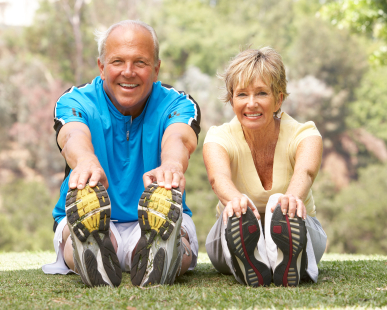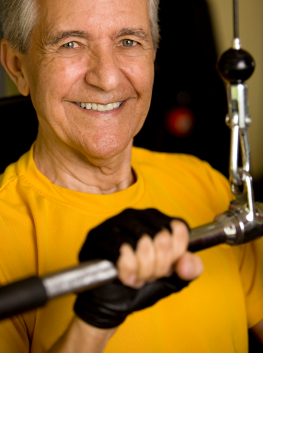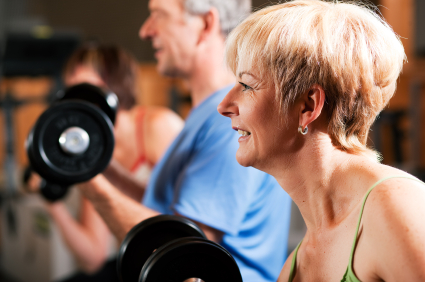The plain fact is that everyone needs a physical exercise regimen. The quality of our lives depend on it. Although it is easy to ignore, our mental, emotional well-being is determined by the state of our physical health. A healthy body contributes to psychological fitness. Poor health colors our entire outlook on life.
Common sense, science, and historical tradition tell us the advantages of a regular program of exercise.
Exercise generates vitality. When people are involved in exercise they are more alert, interested in their activities and more motivated. Exercise leads to relative freedom from the effects of stress. Physical activity helps to promote relaxation by reducing accumulated tensions.
Despite these benefits, many of us exercise sporadically, tiring ourselves in grandstanding displays of strength and power every now and then, only to let days and weeks go by before we get any exercise again. Or some of us may give excuses like, “I’m so tired at the end of the day”, thereby missing the point of an exercise regimen. With a commitment to exercise comes less fatigue and a positive outlook.
When we dismiss exercise because of more pressing demands on our time, we are undermining the basis of our health as well as our endurance for a good, long life. We need to allot time on a regular basis for exercise of some sort.
It doesn’t take heroic efforts to produce good health effects from exercise. We know that the consistent aerobic exercise improves heart and lung function. We know that moderate weight bearing exercise builds bone, and that both contribute to lean body mass. The Centers for Disease Control and Prevention recommends healthy people exercise for at least 30 minutes most days of the week. A few brisk walks each week may have a pronounced effect on longevity, and even an occasional stroll may make a difference to your health and lifestyle.
Flexibility Training
Flexibility is the range of motion of a joint of group of joints. The range of motion is determined by the joint capsule. The capsule consists of the ends of the bones, the ligaments joining them, the lubricating fluid, and the synivial membrane, as well as the muscles and tendons which support it.
Increasing the range of motion contributes to well-being and health. It results in a more symmetrical body, better posture, improved balance, relief of muscle cramps, and the alleviation of pain. Flexibility also reduces the chance of injury.
Start with the following flexibility exercises. These stretches are customized for the varying flexibility of difference body areas. Doing all of them takes approximately fifteen minutes. Do them for twenty-eight days, in the morning, noon or evening, but always at the same time of day.
Developing this habit, may motivate you to develop your own set of workable standards for a personal exercise regimen.
Gastrocnemius and Achilles Tendon
Stand upright, about an arm’s length from a wall. Bend one leg forward and keep the opposite leg straight. Lean against the wall, bracing your lower arms against it. Keep the heel of your rear foot down, sole flat on the floor, foot pointing forward. Hold the stretch for ten seconds and relax. Switch legs and repeat again.
Ankle and Lower Leg
Sit upright in a chair or on the floor with one leg crossed over the opposite knee. Grasp your ankle with one hand and the ball of your foot with the other. Slowly turn your ankle upward. Hold the stretch and relax. Do 4 – 8 repetitions. Switch feet an repeat.
Abductors
Sit upright on the floor with your back against the wall, your legs flexed and your heels touching each other. Grasp your feet or ankles and pull them as close to you as possible. Lean forward from the hips without bending your back and attempt to lower your chest to the floor. Hold the stretch for ten seconds and relax.
Triceps
Sit or stand upright with one arm behind your lower back and placed as far up your back as possible. Lift the other arm over your head, while holding a folded towel. Flex your elbow and grasp the towel with your lower hand. Work your hands together. Hold the stretch for 10 seconds and relax. Switch arm positions and repeat.
Quadriceps
Stand upright with one hand against a surface for balance and support. Flex one knee and raise your heel to your buttocks. Bend the supporting leg. Reach behind and grasp your raised foot with one hand. Pull your heel toward your buttocks. Hold the stretch for 10 seconds and relax. Reverse legs and repeat.
Lower Back
Lie flat on your back with your body stretched out on the floor. Flex your knees and slide your feet toward your body. Grasp your thighs and pull your knees toward your chest, elevating your hips slightly. Hold the stretch for 30 seconds. Re-extend your legs slowly, one at a time.
Hip Flexors
Lie on the bed or the floor with your legs extended. Flex one hop, and raise your knee toward your chest. Clasp your hands behind your raised knee. Bring your knee to your chest. Hold the stretch for 10 seconds and relax. Repeat with the other leg.
Lower Back
Sit upright in a chair with your legs separated. Extend your body forward, bending at the hip, and slowly lower your stomach between your thighs. Hold the stretch for 30 seconds and relax.
Buttocks and Hips
Sit upright on the floor, with your hands on the floor behind your hips and your legs extended. Bring your left foot over your right leg and slide your heel toward your body. Reach over your left leg with your right arm. Press your right elbow into your knee and look over your left shoulder. Hold for 30 seconds. Relax. Reverse legs and repeat.




